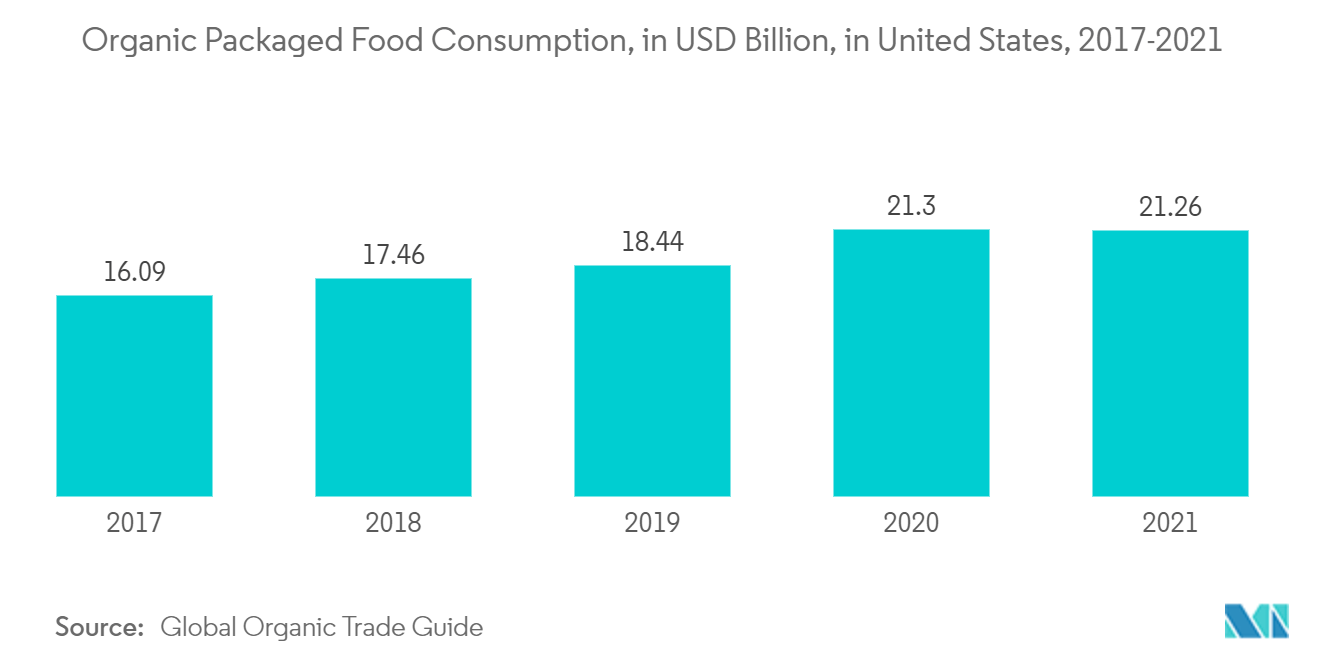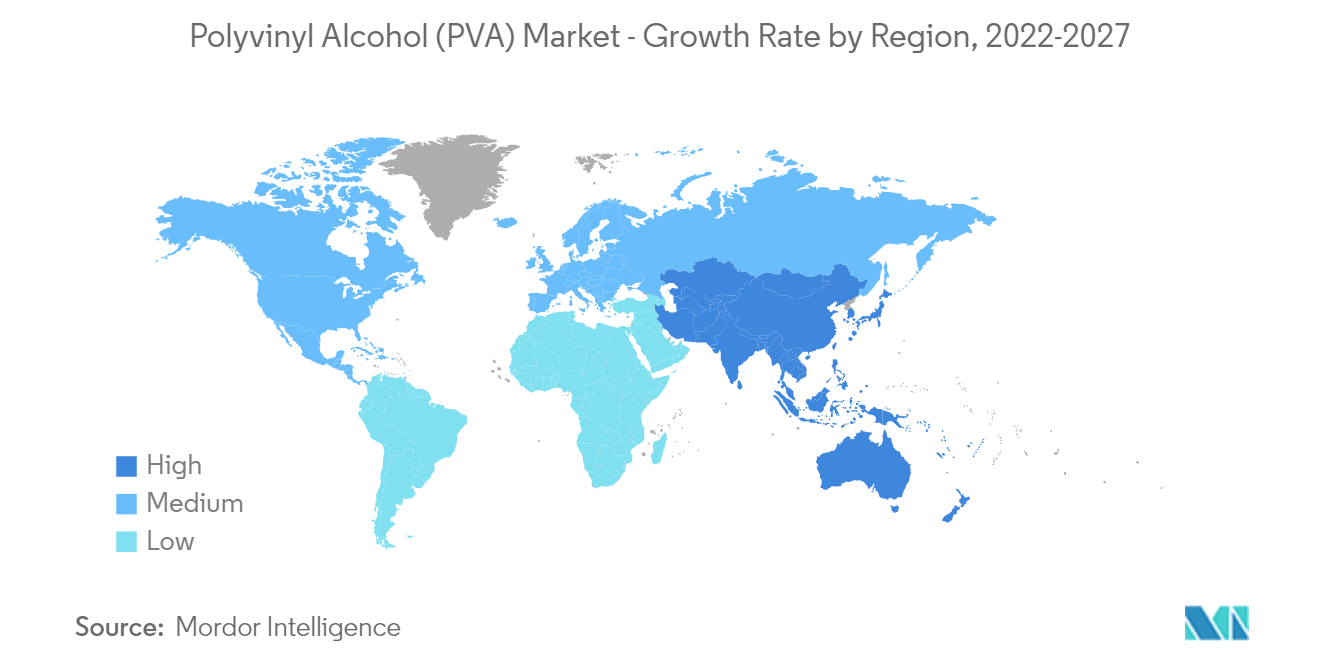Market Trends of Polyvinyl Alcohol (PVA) Industry
This section covers the major market trends shaping the Polyvinyl Alcohol (PVA) Market according to our research experts:
Food Packaging to Dominate the Market
- In the food packaging industry, PVA is used as a binding and coating agent, a film coating agent, in applications where moisture barrier or protection properties are required.
- PVA protects the active food ingredients from moisture, oxygen, and other environmental components, while simultaneously masking their taste and odor. It allows for easy handling of finished products and facilitates ingestion and swallowing. Furthermore, the viscosity of PVA provides for the application of the PVA coating agents to tablets, capsules, and other forms to which film coatings are typically applied at relatively high solids.
- Emerging demographic conditions, new customer demands, growing purchasing powers in emerging markets, increasing emphasis on sustainable, easy-to-use packaging, and out-of-home consumption trends are expected to drive the food packaging market in the future.
- The United States and China are among the most significant food packaging industry while emerging economies such as Africa are expected to register substantial growth through the forecast period.
- The food and beverage industry is essential to the US economy. E-commerce and delivery are also gaining popularity. With the high internet penetration rate and the rising demand for convenience, consumers are increasingly ordering groceries and other food products online.
- Services like Amazon Fresh are increasing, allowing consumers to shop for fresh produce without leaving the house. Moreover, in New York, bakery manufacturing accounts for most food and beverage processing plants, followed by wineries and animal slaughter and processing plants.
- The rising demand for organic food across the globe will also boost the consumption of food packaging. The United States is the largest consumer of packaged organic food. The country accounted for USD 21.3 billion in 2021, representing about 40% of the global market, with a per capita expenditure of USD 71.40.
- In 2021, food spending by US consumers, businesses, and government entities totaled USD 2.12 trillion, recovering from a sharp decline in 2020 in which the food market was disrupted by the COVID-19 pandemic and the recession in which food spending totaled USD 1.81 trillion.
- In September 2022, China produced approximately 11.6 million metric tons of processed paper and cardboard, up from 10.74 million metric tons in September 2021. This growth is attributed to the growing awareness about environmental protection and increasing packaging usage for recyclable food. The value is expected to grow in the coming years, thus leading to increased demand for the polyvinyl alcohol market.
- Therefore, the above factors are expected to impact the market in the coming years significantly.

China to Dominate the Asia-Pacific Region
- In Asia-Pacific, China is the largest economy in terms of GDP. In 2021, the country witnessed about 8.1% growth in its GDP, despite having trade disturbance caused due to its trade war with the United States.
- Globally, China dominated the PVA market with the country's growing construction and textile industry. China ranks at the top in the global textile manufacturing industry. In 2021, China's exports of textiles, apparel, and clothing accessories increased to USD 189.3 billion in the first seven months of 2022, registering a growth rate of 17.35% year-on-year, and garments and clothing accessories export reached USD 99.6 billion, which was 18.5% higher than the same period of last year. Therefore, this significantly enhanced the market's growth for polyvinyl alcohol.
- The textile industry in China is going through a tough restructuring, with enormous production capacity, oversupply at home, high labor costs, and rising global protectionism, which eroded its competitiveness. Still, the country continues to dominate, both in the textile manufacturing industries and continue being the major exporter of textiles through the years to come.
- In January 2022, China produced about 5.7 billion m of clothing fabric and reached 3.81 billion m in October 2022, with consistent production above three billion m throughout 2022, which impacted the market demand for the polyvinyl alcohol (PVA) market.
- The Chinese food packaging industry is expected to register significant growth, owing to the rising health and wellness consciousness, expanding middle-class population, and rising consumer purchasing power.
- The construction industry is expanding significantly, with the country expected to be among the top contributors to global construction spending (along with the United States and India) through 2023.
- Therefore, the above factors are expected to impact the market in the coming years significantly.


